Let’s face it: we live in a world where connecting online is part of our everyday life.
As businesses look for ways to reach their audiences effectively, two formats have become super popular: webinars and virtual events. While they might sound similar, they each serve different purposes.
In this article, we’ll break down what webinars and virtual events are, highlight their differences, and help you decide which one is best for your goals.
What is a Webinar?
A webinar is a live, online presentation or seminar where an expert or group of experts shares insights on a specific topic. It's hosted on a digital platform, allowing participants to join from anywhere in the world, making it accessible and convenient.
Think of it as an interactive learning experience where you can engage directly with the presenter through features like live Q&A, polls, and chat. Webinars can cover anything from customer onboarding, product demos, industry trends, and training sessions, to expert discussions on key issues in your field. They’re designed to be informative, focused, and often hands-on, giving participants the chance to learn something new or solve a problem in real time.
The beauty of webinars is that they bring valuable knowledge to your screen, without the need for travel or time away from your regular work, all while allowing live interaction with both the presenter and fellow attendees.
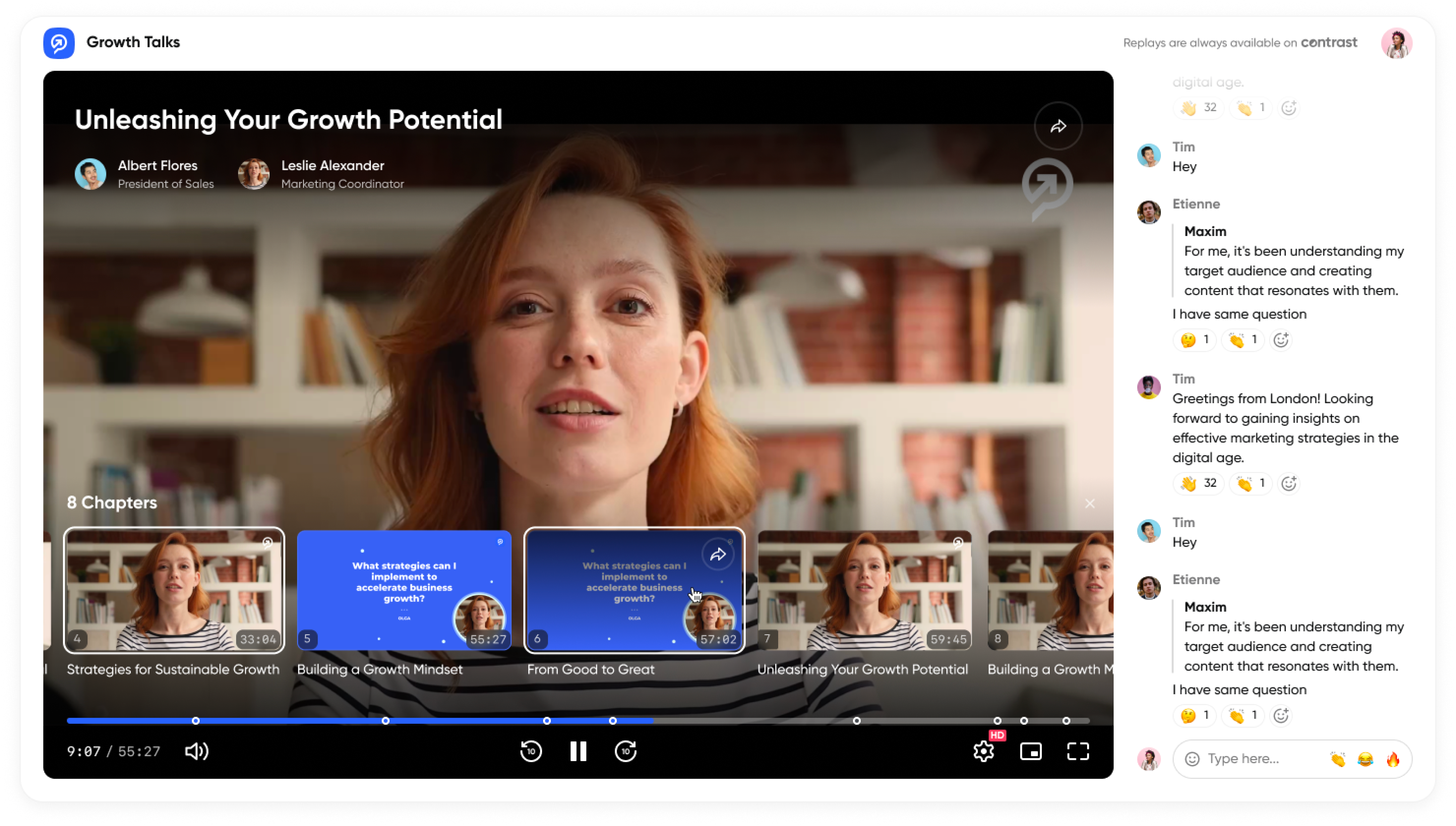
Key Features of Webinars
Webinars are an effective way to connect, share knowledge, and engage your audience online.
Here are some key features that make them both engaging and valuable:
- Presentation focus: Webinars typically feature a presenter or a panel of experts who guide the session. They often use visual support like slides, videos, or live product demos to illustrate key points and keep the content interesting and easy to follow. This helps participants stay focused and absorb the information more effectively.
- Interactive elements: One of the best parts of hosting webinars is the chance for real-time interaction. Features like Q&A sessions, live polls, and chat rooms allow attendees to ask questions, share opinions, and get involved. This creates a more engaging experience and ensures participants feel heard and included.
- Duration: The average webinars length is between 30 minutes to two hours, which is the sweet spot for keeping people engaged without overwhelming them. The concise format makes it easy for attendees to fit into their schedules while still covering the topic in-depth.
- Follow-up: After the webinar ends, attendees often receive follow-up emails with a recording of the session, additional resources, or answers to questions that weren’t addressed during the live event. This allows participants to revisit the material at their own pace and reinforces what they learned.
Together, these features make webinars a powerful tool for sharing knowledge, sparking conversation, and building lasting connections with your audience.
What is a Virtual Event?
A virtual event is a broader term for any online gathering that includes a variety of activities, sessions, and networking opportunities. Unlike webinars, which typically focus on a single presentation, virtual events offer a more diverse experience with options like workshops, panel discussions, live demos, and even social events like virtual networking lounges.
Attendees can choose from multiple sessions, allowing them to customize their experience based on what interests them most. This flexibility makes virtual events more interactive and engaging than a one-time webinar.
Networking is another key feature of virtual events. Participants can connect with others through chat rooms, video calls, and breakout sessions, providing plenty of opportunities to meet new people and build professional relationships.
Overall, virtual events are versatile and can range from smaller, focused sessions to large conferences with hundreds of attendees. They provide a more immersive experience, with something for everyone, whether you're there to learn, network, or simply explore new ideas.
Key Features of Virtual Events
Virtual events offer a dynamic and flexible way to engage audiences, making them perfect for everything from small workshops to large conferences.
Here are some key features that make virtual events effective:
- Multi-session format: Unlike webinars, virtual events usually have several sessions happening at once or in a sequence. This gives attendees the freedom to choose the sessions that interest them the most, creating a more tailored experience. Whether it’s a live panel, a workshop, or a product demo, people can pick and choose what works best for their schedule and interests.
- Networking opportunities: One of the standout features of virtual events is the ability to network with others in real time. Many virtual events include dedicated networking sessions or interactive areas where attendees can connect through video calls or chat rooms. This allows participants to share ideas, discuss topics, and build meaningful professional relationships, even if they’re miles apart.
- Exhibitor presence: In virtual conferences or trade shows, exhibitors can set up digital booths to showcase their products or services. Attendees can visit these booths, watch product demos, ask questions, or even chat with sales reps, making virtual events just as engaging as in-person ones for businesses looking to connect with potential customers.
- Larger scale: Virtual events have the advantage of being able to accommodate a much larger audience compared to in-person gatherings. Whether you’re hosting a conference, an expo, or a global summit, virtual platforms can support hundreds or even thousands of attendees, making it easy to scale up without the logistical challenges of a physical venue.
These features combine to create a flexible, engaging platform that adapts to the needs of different audiences. With virtual events, you can expand your reach, increase attendee engagement, and provide a memorable experience that brings people together—no matter where they are in the world.

Run Webinars or Virtual Events to Engage your Audience
Start for free with up to 30 registrants. No credit card needed.
Start for freeKey Similarities Between Webinars and Virtual Events
Whether you’re considering a webinar or a virtual event, both formats offer powerful ways to engage, educate, and network—without the need for in-person gatherings.
Here’s a look at the key similarities between webinars and virtual events that make them both valuable tools for growing your online presence.
Real-time interaction
Both webinars and virtual events allow for real-time engagement with your audience. Whether it's through live Q&A, polls, or chat, you can interact directly with participants, making it a more dynamic experience compared to pre-recorded content.

Professional applications
Both formats are perfect for professional settings. Whether you're hosting a business presentation, a training session, or a conference, webinars and virtual events offer a polished, professional way to deliver content and share knowledge.
Low-cost options to get started
One of the best things about both webinars and virtual events is that they’re relatively low-cost to get started. No need for expensive venues or travel—just the right platform, good content, and a solid internet connection to reach your audience.
Growing Your Online Network
Both webinars and virtual events offer real-time interaction, making them great for engaging your audience. They’re perfect for professional use and cost-effective to run. Plus, both formats help you expand your online network, connecting you with people worldwide and building lasting relationships.
Key Differences Between Webinars and Virtual Events
When it comes to choosing between a webinar and a virtual event, it’s helpful to know how they differ from each other.
Here’s a breakdown of some key differences:
Audience Engagement
Webinars
Webinars shine when it comes to focused presentations. They allow guest speakers to dive deep into a specific topic, sharing valuable insights that attendees can learn from.
Audience engagement usually centers around the presentation, with opportunities for interaction during the Q&A portion. Features like polls and chat can liven things up, encouraging attendees to share their thoughts and questions, creating a more interactive atmosphere.

Virtual Events
On the flip side, virtual events offer a broader engagement experience. Attendees can navigate through different sessions, participate in discussions, and network in real-time, creating a lively environment.
With multiple speakers and sessions available, participants have a variety of opportunities to connect and engage, making for a more dynamic experience.
Format and Interaction
Webinars
Webinars typically have a straightforward format, focusing on one topic presented by a single speaker or a small group of experts. This focused approach allows for deep dives into subjects, ensuring participants leave with a solid understanding.
Interaction is encouraged through Q&A sessions and polls, allowing for meaningful dialogue.
Virtual Events
In contrast, virtual events bring more variety to the table, featuring workshops, panel discussions, and even informal chats.
This diversity means attendees can choose sessions that resonate with their interests, offering a more tailored experience. The range of formats promotes different types of interactions, catering to various engagement preferences.
Size of the Audience
Webinars
Webinars are generally designed for smaller to medium-sized groups, making them perfect for targeted outreach. It's easier to create specific webinar topics that will be much more relevant to parts of the audience.
This setup creates an intimate atmosphere where attendees can ask questions and engage directly with the speaker, strengthening the overall learning experience.
Virtual Events
Virtual events are built to host larger audiences, often accommodating thousands of participants. This scalability makes them ideal for major conferences and extensive outreach.
Whether it’s a big industry event or a large training session, virtual events connect with a diverse range of participants, amplifying their impact.
Replay Value and Flexibility
Webinars
One of the great perks of webinars is that they can be easily recorded and repurposed for marketing or educational purposes. This allows businesses to share valuable content with those who couldn’t attend live.
Recorded webinars also serve as handy resources for future training or promotional efforts.
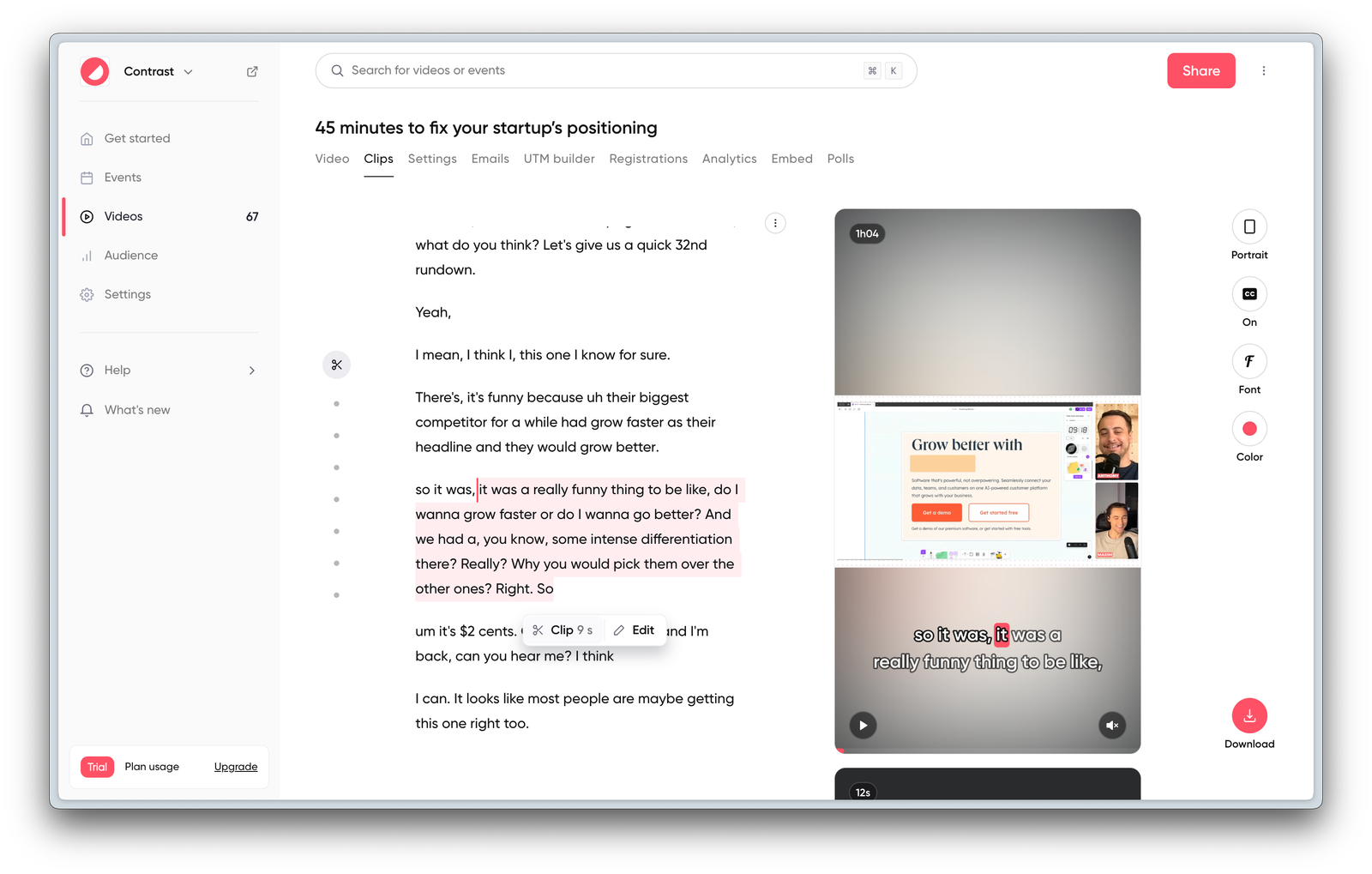
Virtual Events
While virtual events can also be recorded, they often have a lot more content, which might take a bit of extra time to edit and organize.
But with this effort, you end up with a lot of content that can keep audiences interested long after the live event is over.
Cost Considerations
Webinars
Webinars generally have lower costs because they’re typically smaller-scale events. They require basic technology like a webinar platform, a reliable internet connection, and minimal staff for moderation and content delivery.
Since they are often shorter and involve fewer interactive elements, the resources needed are relatively modest.
Virtual Events
On the other hand, virtual events can be more expensive due to their scale and complexity. They often require advanced event management software, dedicated event platforms for hosting multiple sessions or interactive features, and more technical support to ensure everything runs smoothly.
There’s also a need for extra staffing, including tech support, moderators, and possibly even content creators or designers for more immersive experiences. These factors can quickly drive up the overall cost.

Pros and Cons of Webinars vs. Virtual Events
Choosing between webinars and virtual events depends on your goals, budget, and the kind of experience you want to provide. Each format has unique strengths and challenges that can influence your decision.
Here’s a closer look at the benefits and drawbacks of each to help you make an informed choice:
Webinar Pros and Cons
Pros:
- Cost-effective
Webinars are generally more affordable than larger virtual events. With lower overhead costs and simpler tech requirements, they’re accessible for companies of all sizes and ideal for frequent use without a hefty price tag. - Focused content
Webinars are often single-topic events, making it easier to dive deep into specific subjects (consider these webinar ideas). This format allows presenters to stay focused, which helps maintain the audience’s attention and deliver value on a particular topic. - Easy to measure
Webinar platforms typically offer straightforward analytics, making it easy to track key webinar metrics like attendance rates, participant engagement, and poll responses. These insights help assess the success of your session and can inform improvements for future webinars.
Cons:
- Limited interaction
A lot of webinars platforms aren't built for interaction, which can make the session feel more like a lecture. Although many platforms offer Q&A and chat features, webinars generally don’t allow for the level of participant engagement you might find in a more immersive virtual event. So make you sure you pick a webinar platform built for interaction. - Scalability issues
As the number of attendees grows, keeping everyone engaged becomes more challenging. Larger audiences may lead to slower response times in chat or Q&A sessions, which can reduce the quality of interaction and make the experience feel less personalized.
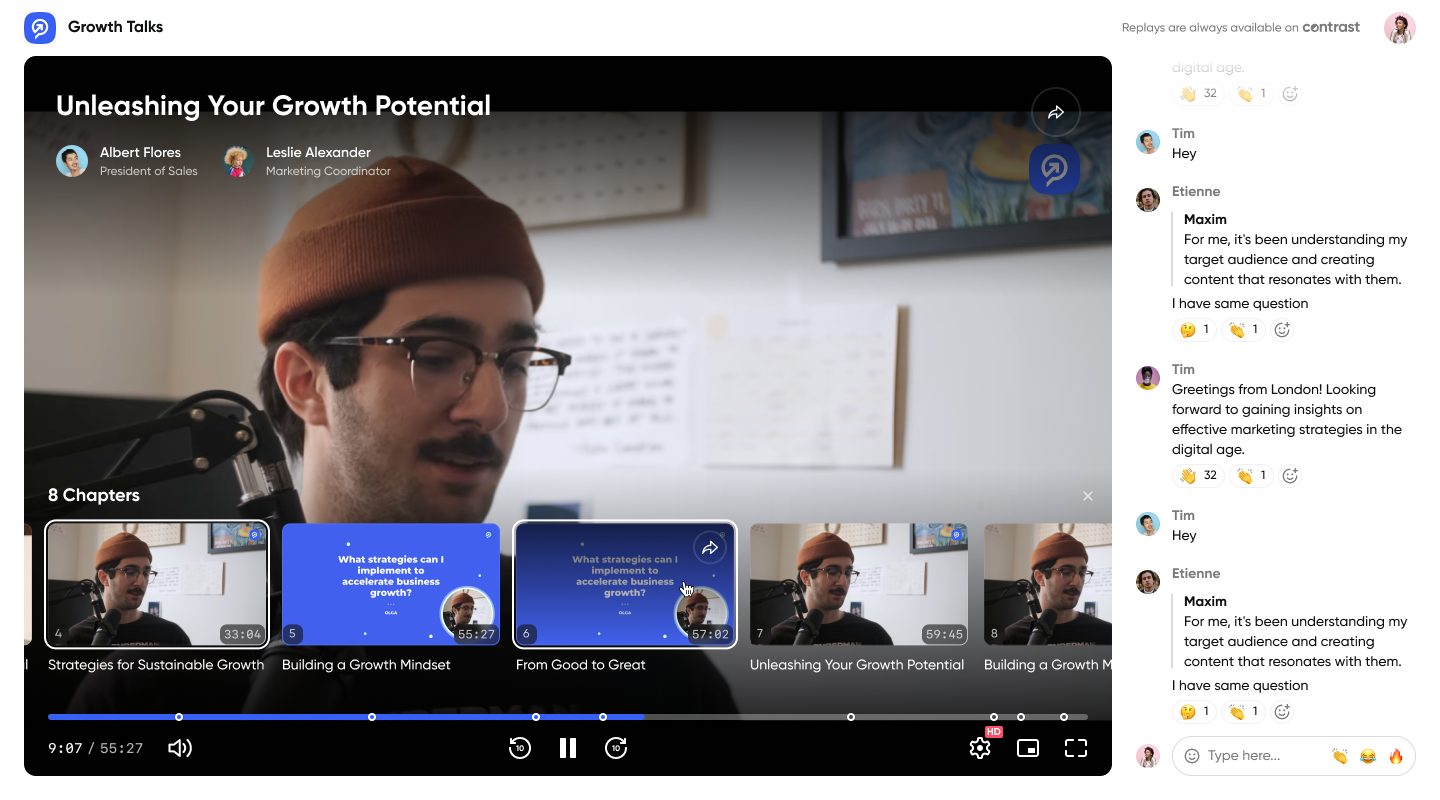
Virtual Event Pros and Cons
Pros:
- Diverse experiences
Virtual events often offer a mix of session types—such as keynotes, workshops, panels, and interactive discussions—which lets attendees choose topics and activities that interest them most. This variety keeps participants engaged and allows for a richer experience. - Networking opportunities
Virtual events provide multiple ways for attendees to connect with each other, from breakout rooms to virtual networking lounges. These interactions can foster connections that might lead to partnerships or new business, making the event more valuable for participants. - Scalability
Unlike traditional events with limited physical space, virtual events can scale to host thousands of attendees. This flexibility makes virtual events ideal for both small and large audiences, giving you the chance to reach more people globally.
Cons:
- Higher costs
Virtual events often require advanced technology, multi-session capabilities, and additional resources, which can increase costs. Planning and managing a large-scale event typically involves more investment in software, technical support, and even virtual event planners. - Complex planning
Virtual events involve more logistics than a webinar, from coordinating speakers and sessions to managing networking options. With multiple moving parts, organizing a successful virtual event requires time, effort, and careful planning to ensure everything runs smoothly.
Webinars and virtual events both have unique strengths. Webinars are budget-friendly and great for focused content but offer limited interaction. Virtual events provide a more engaging experience with diverse sessions and networking opportunities, though they come at a higher cost and require more planning. When deciding between the two formats, consider which best aligns with your goals, budget, and the needs of your audience.
Picking the Right Format for Your Needs
So, how do you choose between a webinar and a virtual event?
Here are some tips to help you figure it out:
Matching Your Business Goals
- Identify your objective: What do you want to achieve? If you’re looking to educate a specific audience about a topic, or create regular sessions for your audience, a webinar might be the way to go. But if you want to create a larger gathering for networking or brand awareness, a virtual event could be a better fit.
- Audience needs: Think about what your audience is looking for. Are they more interested in focused content or a wider range of experiences?
Budget
- Assess your budget: Determine how much you’re willing to invest. Webinars are generally more budget-friendly, while virtual events can require a larger financial commitment.
- Weigh potential returns: Consider the potential ROI of each format. A well-executed virtual event could provide greater long-term benefits, like increased brand exposure and lead generation.
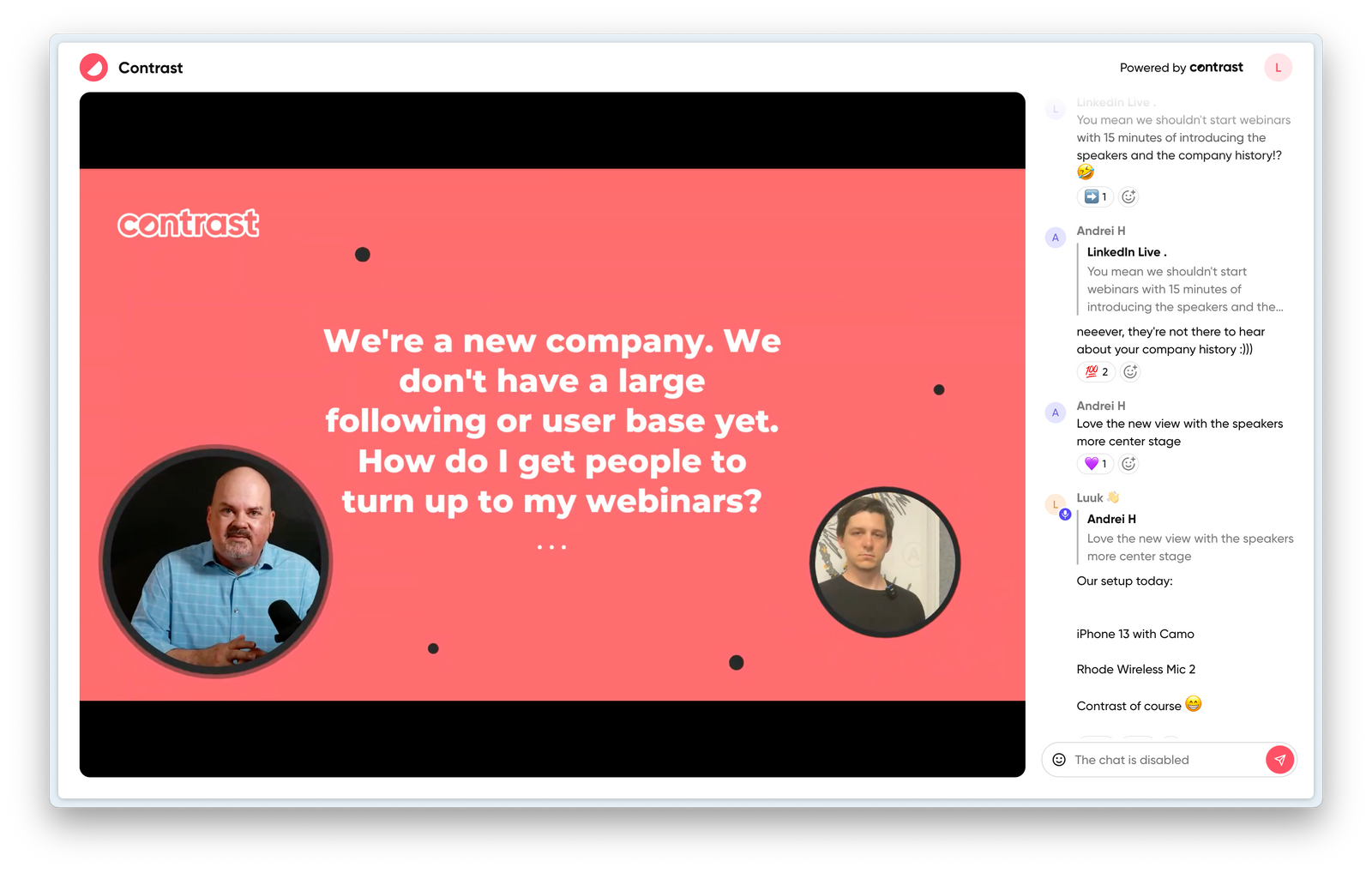
How to Create Webinars and Virtual Events with the Right Platform
Creating engaging webinars and virtual events is a great way to connect with your audience, and choosing the right platform is key to making them memorable and valuable.
Here’s a simple guide to help you get started with each format:
Creating a Webinar
- Choose a relevant topic: Pick a subject that aligns with your audience’s interests and business goals.
- Select a webinar platform: Choose a platform that fits your needs, looking for features like interactivity, ease of use, and good analytics. Consider using Contrast, which offers all these features to help you create a smooth and engaging webinar experience.
- Promote the webinar: Use email marketing, social media, and your website to get the word out and encourage people to register.
- Engage your audience: Incorporate interactive elements like polls and Q&A sessions to keep things lively and engaging.
- Follow up: After the webinar, send a follow-up email with a recording, additional resources, and a thank-you note to keep the conversation going.
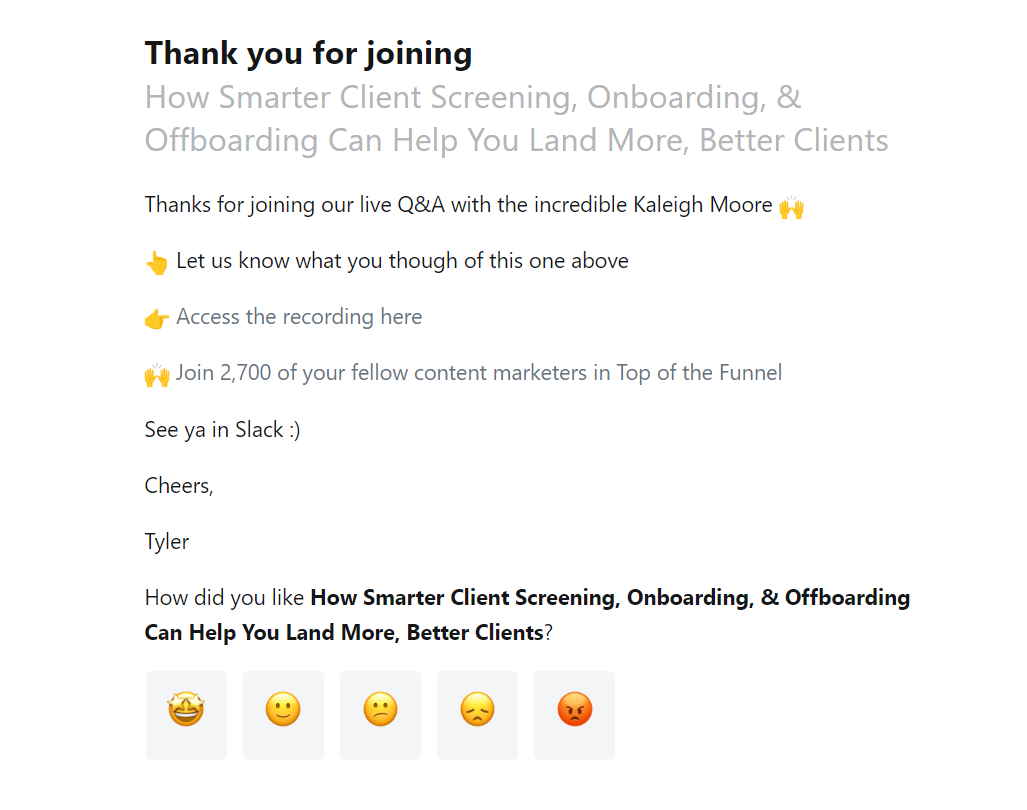
Creating a Virtual Event
- Define the purpose and format: Decide on the objectives and format of your event, including the types of sessions and networking opportunities you’ll offer.
- Choose a virtual event platform: Select a platform that can handle multiple sessions and networking features.
- Plan the agenda: Create a detailed schedule outlining the topics, guest peakers, and networking opportunities.
- Market the event: Use various channels to promote the event and drive registrations. Start spreading the word early!
- Engage participants: Create interaction through breakout rooms, chats, and networking sessions to create a lively experience.
- Evaluate success: After the event, gather feedback from attendees and look at metrics to see how successful your virtual event was. Use this information to improve future events.
Creating successful webinars and virtual events is all about choosing the right topics, keeping things interactive, and connecting with your audience. Promote early, stay engaging, and follow up after the event to keep the engagement going.
With a little planning, you’ll be ready to host online experiences that are both memorable and valuable to your audience.
Wrapping Up: Which One’s Right for You?
Both webinars and virtual events offer unique advantages and challenges. Understanding the differences can help you choose the right format based on your goals, audience preferences, and resources.
As online engagement keeps growing, using these formats effectively is important for connecting with your audience. Whether you go for a focused webinar or a interactive virtual event, the goal is to create an experience that truly resonates with them.


Run Webinars or Virtual Events to Engage your Audience
Start for free with up to 30 registrants. No credit card needed.
Start for free